-
Posts
1,914 -
Joined
-
Last visited
Content Type
Profiles
Forums
Developer Articles
KSP2 Release Notes
Posts posted by Minmus Taster
-
-
Weather or not it launches it's gonna be a loooong night

-
48 minutes ago, intelliCom said:
I guess there's two attitudes to SLS's failure during launch:
- Being distraught
-
Laughing at the fireworks
(That's probably me)
Neither is right or wrong. I just want them to get on with it so we can just be released from the torture of delays after delays, and move on to other things.
I honestly think it will just rust away on the pad
-
17 hours ago, Beccab said:
Waivers!

THISISJUSTABADDREAMTHISISJUSTABADDREAMTHISISJUSTABADDREAMTHISISJUSTABADDREAMTHISISJUSTABADDREAMTHISISJUSTABADDREAMTHISISJUSTABADDREAMTHISISJUSTABADDREAM-
-
If you take the the name of the Webcomic XKCD and then add up the numbers you get from the placement of each letter in the alphabet you get 42
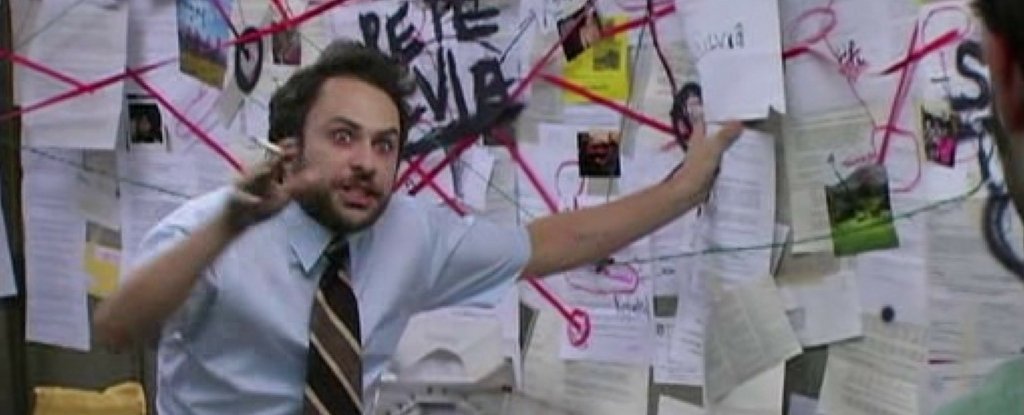
-
Large chunk of Challenger was found by the History channel while looking for a WW2 era plane;
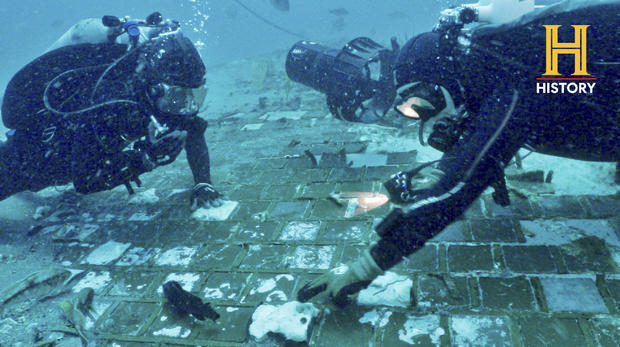
-
It's the little things in KSP that put a smile on my face


-
Ancient Daydreams; a history of Kerbal-kinds past, present, and future - By Samford Kerman
When I was a young Kerbal I remember a story about how my grandmother had once jumped from a tall tree in her youth trying to reach The Mun, she didn't make it obviously but that hadn't stopped my father from trying the stunt himself, surely he would jump higher and he would be the first one to walk on The Mun. He did jump higher than his mother but to his annoyance all he got was a harder fall. I would also attempt this feat the very next day, I climbed the highest possible branch on a monster tree and jumped, I was lucky the tree had so many long branches or I may not be writing this now. I thought to myself; If I couldn't jump to The Mun then how could anyone?" Two years later I watched on live TV as the first Kerbal flopped onto our Moon's surface.
Kerbal-kind has accomplished many impressive feats as of late, many may find it hard to keep up with the rapid progression of our technology, in particular our space and aviation programs, as well as our ability to keep participants alive. I'm Samford Kerman and in this piece I will be taking a journey though history to see how Kerbals evolved and grew to where we are in the modern day, from the dirt to the stars, this is the history of the Kerbals;
Evolution and Biology;
SpoilerHow Kerbals came to be;
First steps;
Many aspects of Kerbal-kinds earliest days are still shrouded in mystery; it is thought that the ancestors of the modern Kerbal evolved in the ocean around 2 billion years ago, starting with single celled organisms in hot-springs before progressing somehow to more complex lifeforms. The most common theory to multicellular life is when two cells stopped trying eating each other for a moment and started talking, merged together, found out they were soul mates and lived happily ever after, while some say this theory is too sentimental it is certainly very cute.
Whatever caused more advanced life to begin we know it started; around 1 billion years ago, and it would progress rapidly from there, it was around 700 million years ago when some of these lifeforms would begin to use the power of the sun for energy, this would eventually create plants but would also create the chain of species which would evolve into Kerbals. Ancient creatures would first make they're way onto land around 300 million years ago, these creatures would realize that the sun was easier to collect for energy and would slowly evolve to live on land more than the sea.
50 million years ago when the first species considered to be "Kerbal-like" evolved, they were almost fully evolved to be on land with only some light webbing on they're hands & feet for water, they were green like modern Kerbals and spent most of they're time on land picking berries, but much of they're time was also in the water to keep they're delicate skin dry and to reproduce. This species was also quite intelligent using tools to pick berries, they seemed to worship snacks as as spirits and Kerbol as a god, though they almost never looked up at it since they're massive eyes were quite sensitive out of water.
Over time they're webbing and need to maintain skin would fade away. The modern Kerbal in generally considered to have been born when our massive eyes becoming more resistant to Kerbols light. Kerbals started existence 10 million years ago in the then-plains region which would later become a massive desert, while most of the planet consisted of grass with the occasional tree but this wasn't an issue to the small population of Kerbals, the lack of competition on this otherwise empty planet was also advantageous to our ancestors.

The life cycle and quirks of the modern Kerbal;
Kerbal life begins with gestation by the mother, weirdly enough we don't actually know how we reproduce yet, we know that Female Kerbals can reproduce on they're own but we don't know what actually triggers a Kerbal to produce an egg, though the most popular theory is a specific diet along with (very) extreme sunbathing can lead to a Kerbals body triggering the reproduction process. A Kerbal egg spends two to three months inside it's mothers stomach, during this time the Kerbal carrier will need to spend a lot of time sunbathing and eating snacks in order to stay healthy and in a good mood.
Kerbals lay between 1-4 eggs, the eggs need to be kept in water and sunlight constantly to keep the eggs from drying up while they gather energy from the sun. The eggs will start off small, hard-ish, and dark green in color, as time goes on they will become softer and larger until they are almost translucent and they will become a pale green. After 5 or so months the egg will burst and oh look at that, we've got a baby Kerbal!
Baby Kerbals are small and frail, they're hands are large to cling to they're parents backs, they also need constant sunlight and snacks to grow properly. Eventually the Kerbal will be able to walk and talk and will spend the next 20 or so years developing to full adulthood. Kerbals are separated into two sexes; Male and Female Kerbals, Male Kerbals cannot reproduce and evolved to put it simply; do stupid things and make it out alive. Adult males get stronger and bulkier heads to survive a beating. Female Kerbals are more or less the same as the Males aside from the fact they can have children. They're heads do not become bulkier and remain circular to conserve energy, though many modern scientists today comment that all of these differences don't really make much of a difference for improving your survival when you do the things a Kerbal does on a daily basis. Regardless of which sex a Kerbal belongs too one thing is certain in a Kerbals life; none of them can resist the chance to do the most dangerous things imaginable.
Kerbal lifespans are quite enormous, even in ancient times Kerbals lived hundreds of years on average and in modern times that time has expanded to THOUSANDS of years. It's unknown why a Kerbal can survive for so long but were not complaining! A Kerbal is unusually durable at adulthood; the body of a Kerbal is connected together with hyper-stretchy organs which can keep a Kerbal alive in very strange circumstances. Though on a rather graphic note; if something happens that is even a little too harsh for a Kerbals body to stay intact (EG; hitting the ground at 8 Mach) then the Kerbal will be reduced to dust.
If a Kerbal survives the antics of they're younger days then they'll slowly grow old naturally and after a long life a Kerbal will die naturally after at least 10 thousand years, the oldest Kerbals are well over 20 thousand years though and the life expectancy of Kerbals will likely only increase further as time goes on. It's is unknown how long a Kerbals life cycle will be affected on other celestial objects, most in the Kerbolar System that can be landed on by Kerbalkind are small and bathed in radiation. But Kerbals being Kerbals will find some strange way to survive out there.
A truly fascinating party trick of a Kerbal is it's ability to use the sun to produce energy. It's unknown how exactly it is that Kerbals can do this, we do know that a Kerbals skin acts like a plants leaves when its in the presence of a sun but how we evolved to to this is a complete mystery. Another neat quirk of the Kerbal is it's ability to hibernate and to conserve the energy it has. You'd think a Kerbal would be pretty wasteful with energy with all the antics we get up to but it turns out that Kerbals are great at conserving energy when they want to. Historically Kerbals have survived many a catastrophe by hibernating through times when energy is sparce. Both of these abilities are as it turns out, great for space travel. All that needs to be done to put a Kerbal in hibernation is the knowledge that energy is spare and just enough of the participants favorite food to induce a "food coma". A Kerbal can then be woken up many years or decades later, usually by the playing of loud music or some sick prank.
History and Discovery's;
SpoilerThe cool things we've looked at;
The Mun and other early discoveries;
The first thing Kerbals ever "Discovered" was The Mun, around 90 thousand years ago (not that long ago ). There are conflicting stories on how this happened, most Kerbals of that time didn't look at the sky and focused on picking berries, they knew Kerbol existed but to no ones suprise gave up on looking at it pretty and worshiped it as a god. A popular story on how The Mun was discovered is that a Kerbal wanted to know why Kerbol left in the night and why it sometimes flickered out during the day. One evening She had enough and looked around at the sky and saw Kerbol setting and The Mun rising. shocked by this strange object in the sky she almost fell over, she was entranced by the objects beauty and tracked it as it arced over the sky. Massive swathes of dark circular "seas" covered the surface of the object, and the lighter area's were rough and marked with many smaller "seas", it was beautiful. She ran back to her family and her tribe to tell them of the thing in the sky, most didn't believe her at first and it's often said she had to push some of them over so that they would look up. The tribe of Kerbals would observe the object over the next few weeks and realized it was probably harmless and was just a part of the night sky, the tribe would name the object "The Mun" which is now thought to mean "Companion".
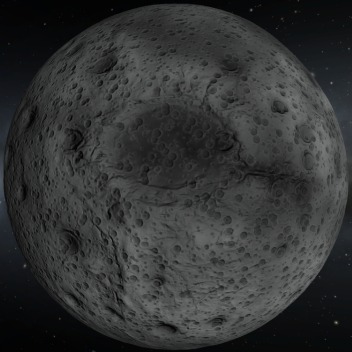
After the discovery began to spread throughout the plains many Kerbals began to look up at the sky as well and soon there was another Interesting find; as Kerbals observed The Mun they realized it would slowly rotate around the sky somehow and blot out Kerbol. If The Mun could blot out Kerbol then it must be closer to the ground then Kerbol, which means Kerbol must be father away. Then Kerbals tried looking at Kerbol through clouds and saw a perfect sphere. But then what is the ground? why does The Mun go around the ground? one of these questions would soon be answered, the story goes that a group of Kerbals climbed two tall hills miles apart to see if they could find each-other in the distance. Neither group saw a thing and while some disputed these findings as "Just plain wrong" the general consensus was that the ground was in fact, another sphere which would be named; "Kerbin" which translates to "Kerbal home". Kerbals also began to notice that on cloudless crisp nights they could see quite clearly thousands of tiny twinkling points of light and a massive band of light across the night sky, though what exactly this magnificent spectacle was would remain a mystery for many thousands of years.
As Kerbals pondered the night sky they began to think up even more creative solutions to they're questions, many Kerbals told stories of Kerbin having been created by Kerbol and Mun being a protector god to watch over Kerbalkind. This story would later expand to included various other deities and hero's which would form a full mythology. With this new fascination with the world Kerbals began to find new ways to make life more awesome, like building safer homes, or finding new ways to entertain themselves in the most dangerous ways possible; like climbing and then jumping off tall tree's. They built temples to they're hero's and gods, one of these temples still stands today miraculously, slowly crumbling away in the desert;
The day the sky fell and Minmus;
As Kerbals began to observe the sky more and more they began to notice an interesting occurrence which would come about every several years, a strange bright white tail forming close to Kerbol, sometimes a small streak mostly hidden by the sun, sometimes a massive tear in the sky which would be followed by a rain of meteor showers which terrified ancient Kerbals. Some believed this was a god of death which would one day destroy the world, other's thought it was another new celestial, both theories had some merit as the disaster coming would show.
Regardless of which point of view Kerbals would choose both agreed that every 6 to 8 years the object would arrive and one day it might get a little too close for comfort. And soon Kerbals would notice a worrying trend, the object was appearing more regularly, modern scientists believe that the "object" was spiralling inward over hundreds of years via encounters with other planets and was likely formed in the outer solar system as a dwarf planet before Jool nudged it inwards. As the object moved inwards Kerbals began to realize that this was a dangerous situation, meteors began to regularly fall onto Kerbin and the massive tail in the sky became near constant in the last decades before the catastrophe.
It had been around 75 thousand years ago and for ancient Kerbals, probably just another day, though some may have noticed the tail in the sky was even larger then normal, the next day was like the last though many probably started to notice just how close that milky streak was becoming, the next day was probably when the meteors started to fall. Many began to realize what was about to happen, some ran, some tried throwing rocks at it and called it names, they knew it probably wouldn't hurt the object but maybe it's feelings would be hurt somehow? Some sat down and enjoyed the view, many looked for shelter in temples and caves. The next day was madness, the tail was no longer visible, Kerbin was inside the tail, meteors were lighting up the sky at night and were beginning to heat up the atmosphere, if you looked up you might just barely make out the object hurtling towards Kerbin. The final day was quiet minus the sky being on fire and such, most Kerbals were either hiding or dead, the atmosphere was alight with thousands of falling objects. The final Kerbals who weren't hiding would have seen through the flames a massive spherical object, it's surface bursting open and boiling away. If the Kerbals had somehow hurt it's feelings it certainly hadn't helped with it's temper. The end seemed inevitable, Kerbals hiding deep underground would have felt a massive explosion and shaking that would have thrown Kerbals around violently, anyone still above ground was atomized instantly.
The violence would continue on for days on end until finally the shaking and burning stopped, the first Kerbals to emerge from caves and temples would find a smashed and destroyed world, soon the last meteors fell and the world was quiet, because there was nothing left to make noise. everything on the planet was either burnt to a crisp or crushed. As the dust kicked up by the impact began to blot out the sun surviving Kerbals would have seen a new object in the sky, a bright but distant point of light in the sky with a light green tail. The object had actually missed Kerbin by a couple dozen kilometers but Kerbins gravity had broken it up partially and it was a large chunk of it that had hit Kerbin. The object is thought to have then almost hit The Mun and slowly fell into a stable orbit on the outskirts of Kerbins SOI. Today that object is known as Minmus or "Little Mun". Scholars today still debate if the moons feelings really had been hurt enough for it to chicken out of a full impact.
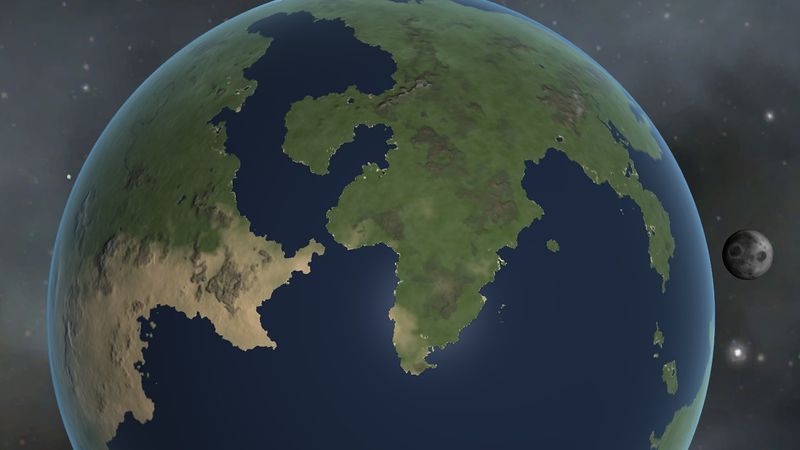
Remerging from the ashes;
Kerbalkind surviving the disaster is considered nothing short of "really really good luck", ancient Kerbals lived quite close to where the chunk of Minmus landed and should have been vaporized on impact. The survival of our ancestors is often attributed to a mountain cluster which blocked just enough of the shockwave to keep Kerbals sheltered in temples and caves alive (This also helped to preserve some ancient structures which are still being found). Even so most of the population was killed on "The day the sky fell" and Kerbalkind had many hard years ahead. The climate destruction brought on by Minmus is hard to imagine and Kerbals were facing a dire choice; stay in the charred remains of the plains or leave and hope for the best. Many Kerbals went in and out of hibernation for years to save energy but some Kerbals decided to leave and try and find refuge outside the plains.
This is rough map of where Kerbals would migrate over the next 10/20 years;

The first migrations were scattered, but slowly evolving into more organized attempts to find better places to live. Most Kerbals chose to go generally northwest though some would attempt to go directly west and ended up becoming trapped. These Kerbals would struggle to survive in scattered tribes for decades until being found again by other Kerbals. Many chose to stop they're journey up north in the tundra after becoming too tired to continue on, as temperatures reached an all time low they were forced to go into hibernation. They would be found and revived on multiple occasions only to return to sleep. Kerbals tried to move around the hostile area to the west but could go no further and had to stop in the tundra camp. The camp only remained civil through a huge effort of the Kerbals who lived at the camp. Kerbals moving east would discover a passage that would lead to a massive new continent which was less affected by the disaster, the survivors would struggle down into two camps in this new continent and as Kerbins climate improved Kerbals began to realize they're world was a lot bigger than initially thought.
As Kerbal life went back to normal the new territory that was now inhabited meant there was a lot more room for Kerbals to grow, after about a thousand year lull in Kerbal advancements due to the disaster the population began to explode and 74 thousand years ago Kerbalkind would finally stabilize they're situation. The next 70 thousand years were peaceful, most Kerbals would simply enjoy life and try various experiments which would usually end in explosions. Kerbals would also continue to expand they're mythology to a full pantheon of characters and stories.
(NOTE: This is a heavy WIP with lots of possible mistakes. More is to come but work is slow)
-
1 hour ago, Beccab said:
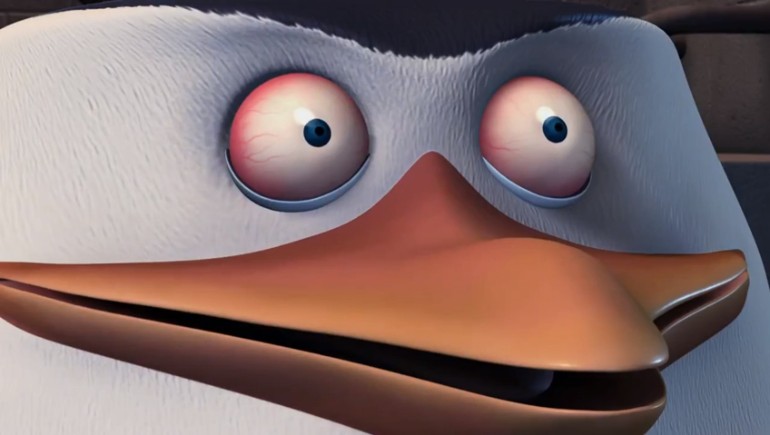
-
He's been mentioned a lot and I'm pretty sure we've already seen some of the other "big 5" scattered about footage, so He's in there for sure (and it would be heresy if he wasn't).
-
Thought this was clickbait at first lmao, now get Everyday Astronaut up there

-
I once went through a long and nasty Minmus mission to get a minimal (get it) amount of science because I didn't want to go to Duna or Gilly yet, I reverted to saves at several points and after over an hour I was finally on my way home, that was when I realized my capsule was coming down a little too fast.
So I got Valentina out, got her to take the science which I had spent an hour collecting, and jumped. and then I realized to I hadn't given her a parachute at launch.
The capsule was fine by the way, never been so angry at myself in KSP before, pretty sure that was the end of that save XD
-
17 minutes ago, Beamer said:
I wonder how they plan to find it, do they have GPS data from ships or sats? Considering how hard it can be to find an actively signalling black box, this seems a few orders of magnitude harder. It doesn't have a black box, right??

I think the plan is to run over the ocean in a pattern like using a sonar for shipwrecks expect it's something that can see small fragments magnetic signatures.
-
8 hours ago, RCgothic said:
Ouch: ಠ_ಠ
This rocket man, I'm not even gonna try holding it back. I hate that flying coffin so much.
Spoiler -
It's Official! CNEOS 2014-01-08 is the first known interstellar meteor!

What's more is that the Galileo Project is funding a mission to try and raise fragments of the meteor.
-
On 11/1/2022 at 5:04 PM, Ryaja said:
The dictionary definition of wet is: Covered or soaked with a liquid, such as water. so theoretically since water is covered in water it is wet, unless it is a single molecule.
So now lava is wet? my life has been a lie after all...
-
Posted about this film in the right thread for

In terms of visuals it looks really pretty, not quite sure about the plot though, can't be much more flat than the first one in that respect since you really can't get that generic, but with all the lousy CGI currently circulating this should be a welcome change.
-
So a sandwich from Subway is literally just a hamburger, but longer, I don't know why this messes with me so much but it does.
-
21 minutes ago, t_v said:
This is it. I was looking closely at the texture and noticed it looked exactly the same as the radiation shields on the middle and back of the craft. I’m not sure if only shielding the front is effective, since I imagine that sideways-moving radiation would still come in at a large enough angle to miss the shielding. But, at significant fractions of c, the radiation from the front can be noticeably worse.
That would make sense, except if you look at it from a different angle its clearly a massive heatshield:

Could be to protect the craft from dust but it does seem a little small to do that and then there's the issue of turning the thing around for a slowdown burn, but it could be to just protect the spaceplanes since they'd need to remain in perfect shape to enter an atmosphere, spaceplane heatshields weren't really a thing in the first game but some of the parts for such vehicles were seen to have more of a black and tiled look in the images shown:

*NOTE: not all the airplane parts are shown to have heatshields but they might just not be as spaceworthy as the larger cockpits
*NOTE 2: Ok so some other stuff shows the larger pods without shields but this could still just be the painting covering it up
-
It's literally a mod, probably an unplayable one to all things considered, KSP2 isn't even out yet, play it for a bit when it's out and then see how you feel.
-
57 minutes ago, Dinlink said:
The Expanse: No serious Kerbal would believe a show where spaceships comes without snacks... Who goes into space without snacks?? Nonsense...
I'm sure there are many snacks onboard, also burning at 8G's from Earth to Jupiter in a week or two is pretty Kerbal to me.
-
2 hours ago, insert_name said:
Going with J1
M1, just for the lols

-
On 10/25/2022 at 3:22 AM, steve9728 said:
Here we go!
via.https://weibo.com/7594961311/MbVINABEy
Comparing with the previous 3 missions: Next-generation crewed spacecraft, Tianhe Core Module and Wentian Module
Time to place our bets
-
-
1 hour ago, The Aziz said:
I still need a source on that. As far as I know, it's clear which planets are in Debdeb because it's been explicitly stated (Charr, Glumo, Gurdamma), but we don't know if the other bodies are also there or not.
It was on the discussion page for Feature video 4, nate confirmed not all the planets were in Debdeb, but I can't find the page for some reason

It's probable there are more in Debdeb that they have shown (Like Rask & Rusk which certainly give a Debdeb vibe) but not all, I'd assume many are in that system since they're using that one much more in marketing material.


.thumb.png.572b74ce81b88d2dc11d0cc31275c803.png)





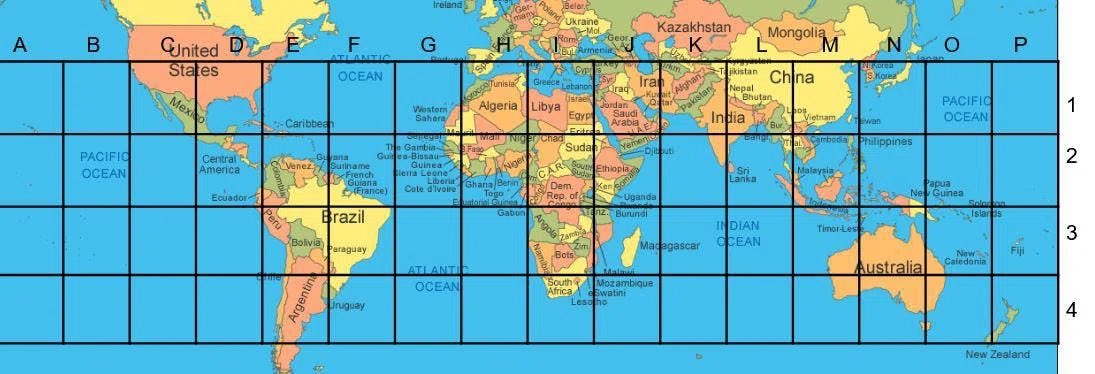
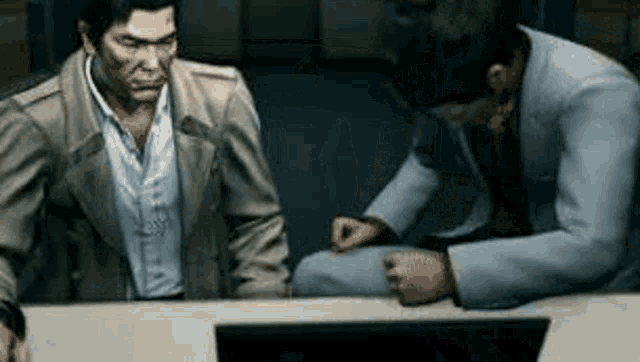
Order of planets and their distances from Debdeb (or Deb Deb)?
in Prelaunch KSP2 Discussion
Posted
Nate said that some were not in Debdeb in the forum discussion for episode 4.
I doubt Lapat is gonna be in Debdeb, we haven't seen much of it but Nate also said that Lapat was the focus of the video's last shot;
So Lapat is probably quite dry (like a dying Kerbin maybe?) but still has plant life on it as we've seen in some other footage, so I doubt it would be in Debdeb since it takes much longer for an ecosystem to develop then a few-hundred million years in a violent star system. Also a planet that serves as a second Kerbin would be pretty big news and might fit better in the second star system to be released later.